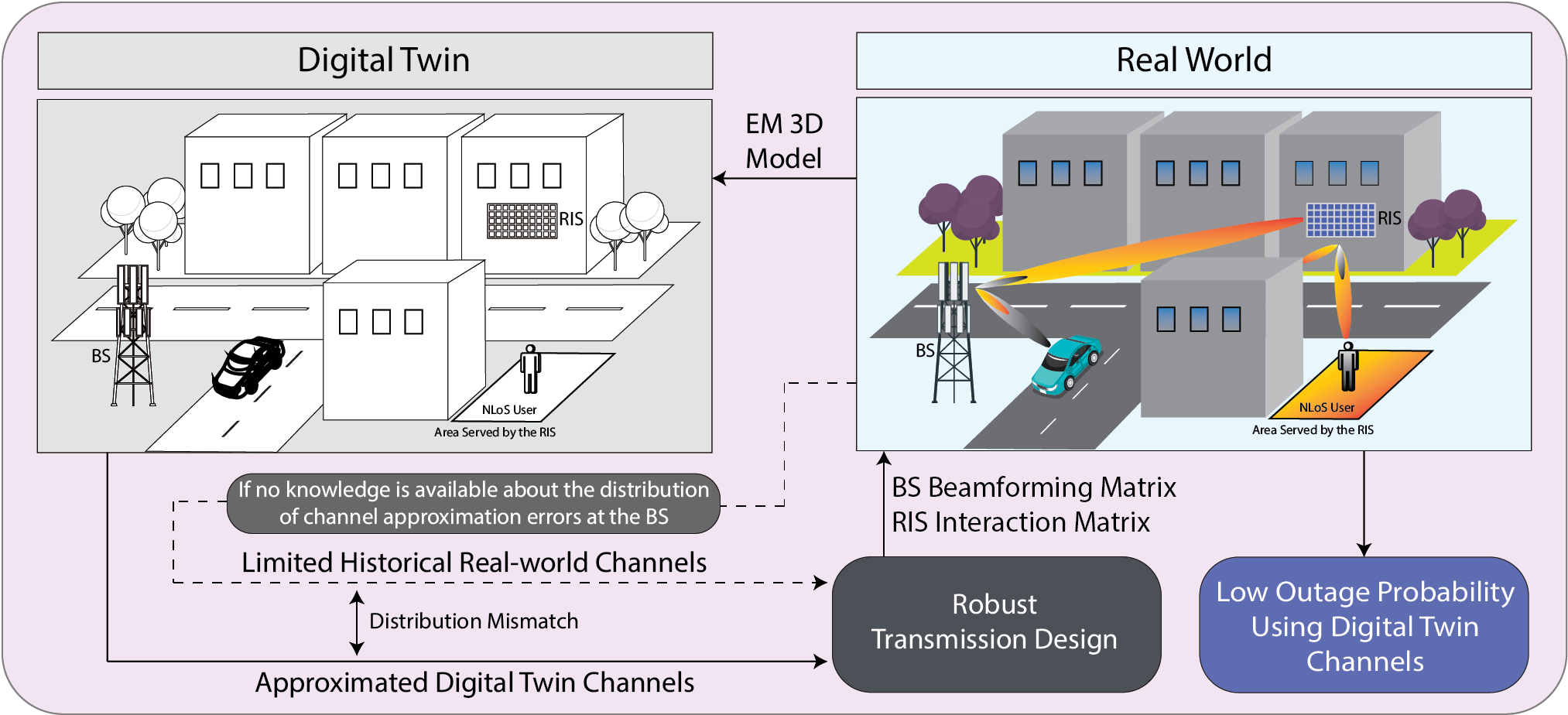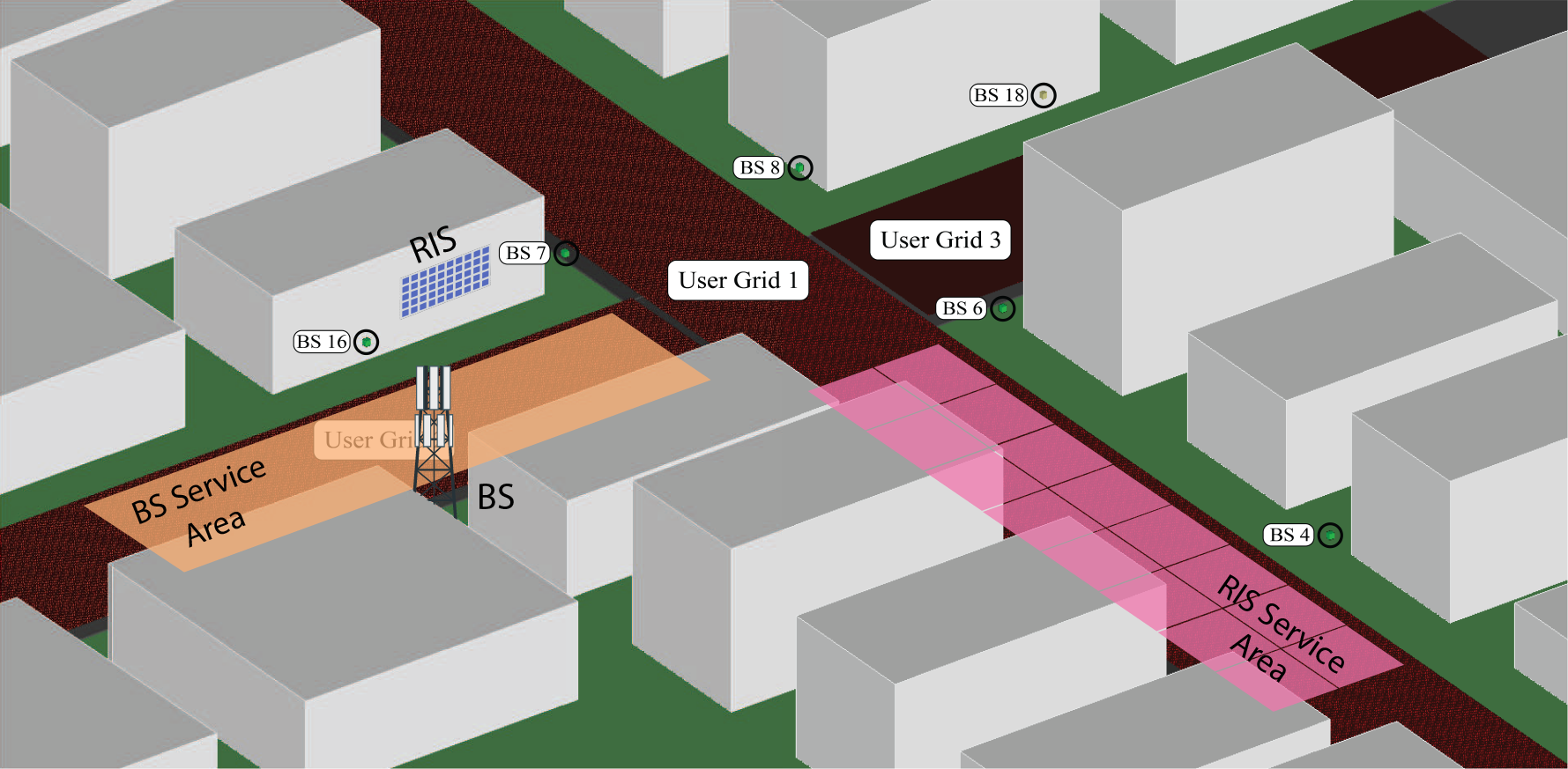Digital Twin Aided RIS Communication: Robust Beamforming and Interference Management
Submitted to the Vehicular Technology Conference (VTC), 2024
Sadjad Alikhani, Ahmed Alkhateeb
Wireless Intelligence Lab, Arizona State University, USA

Fig. 1. This figure illustrates our system model, depicting a scenario where the line-of-sight user is exclusively served by the base station, while the non-line-of-sight user is served solely by a reconfigurable intelligent surface. Since channel estimation approaches in RIS-aided wireless networks are typically infeasible for real-time applications, we use digital twins of the physical environments to approximate the channels. Additionally, we develop a robust transmission design that accounts for digital twin channel approximation errors and reliably meets the network requirements.
Abstract
Reconfigurable intelligent surfaces (RISs) are envisioned to play a key role in future wireless communication networks. However, channel estimation in RIS-aided wireless networks is challenging due to their passive nature and the large number of reflective elements, leading to high channel estimation overhead. Additionally, conventional methods like beam sweeping, which do not rely on explicit channel state information, often struggle in managing interference in multi-user networks. In this paper, we propose a novel approach that leverages digital twins (DTs) of the physical environments to approximate channels using electromagnetic 3D models and ray tracing, thus relaxing the need for channel estimation and extensive over-the-air computations in RIS-aided wireless networks. To address the digital twins channel approximation errors, we further refine this approach with a DT-specific robust transmission design that reliably meets minimum desired rates. The results show that our method secures these rates over 90% of the time, significantly outperforming beam sweeping, which achieves these rates less than 8% of the time due to its poor management of transmitting power and interference.
Simulation Setup

Fig. 2. This figure depicts the geometric arrangement of the simulation scenario, based on the O1 scenario from the DeepMIMO dataset. In this setup, “BS 15” functions as the BS, while “BS 7” serves as the RIS. The highlighted orange and pink regions represent the service area of the BS and RIS, respectively.
Reproduce the Results

Citation
S. Alikhani and A. Alkhateeb, ‘Digital Twin Aided RIS Communication: Robust Beamforming and Interference Management’, arXiv [eess.SP]. 2024.
@misc{alikhani2024digitaltwinaidedris,
title={Digital Twin Aided RIS Communication: Robust Beamforming and Interference Management},
author={Sadjad Alikhani and Ahmed Alkhateeb},
year={2024},
eprint={2406.04188},
archivePrefix={arXiv},
primaryClass={eess.SP},
url={https://arxiv.org/abs/2406.04188},
}

